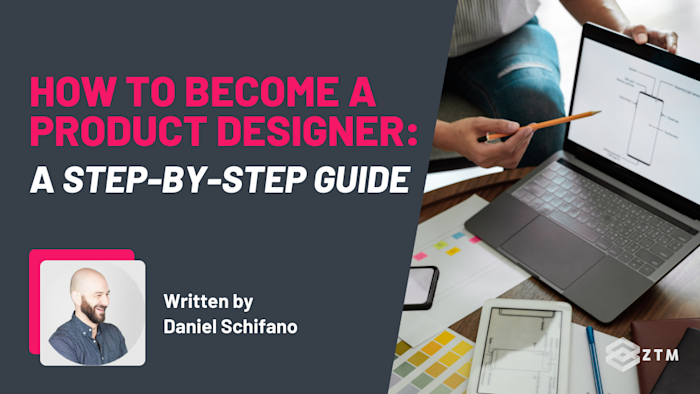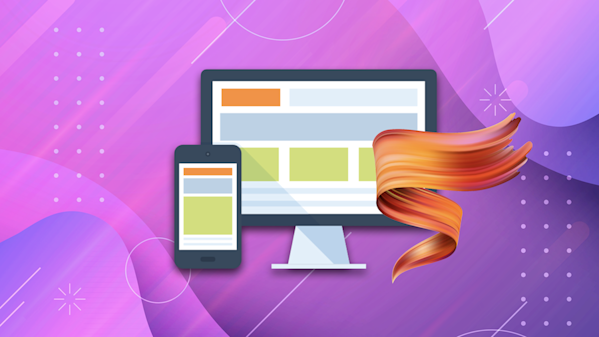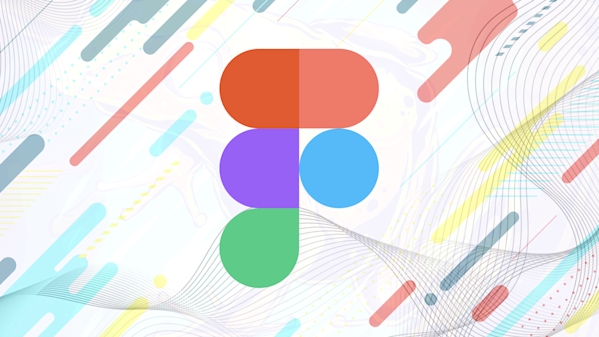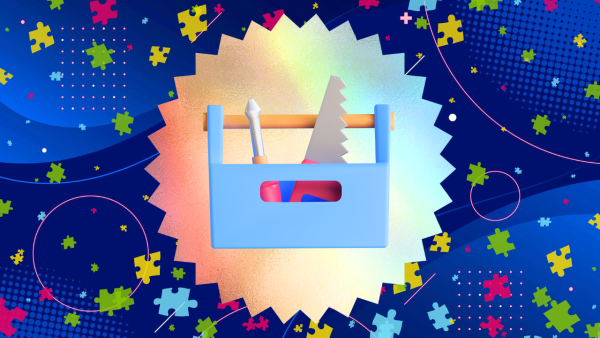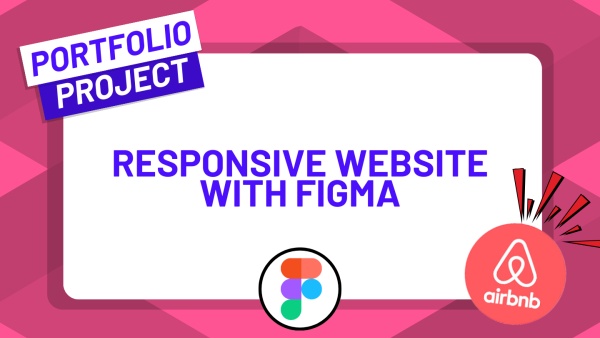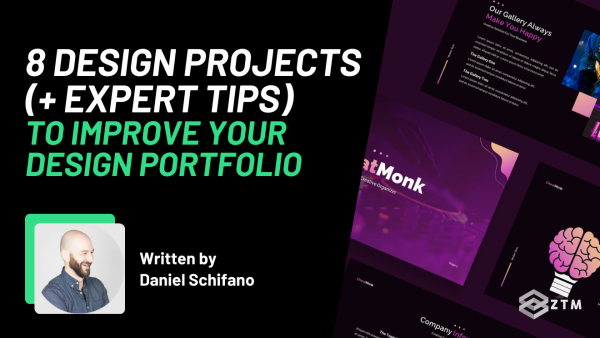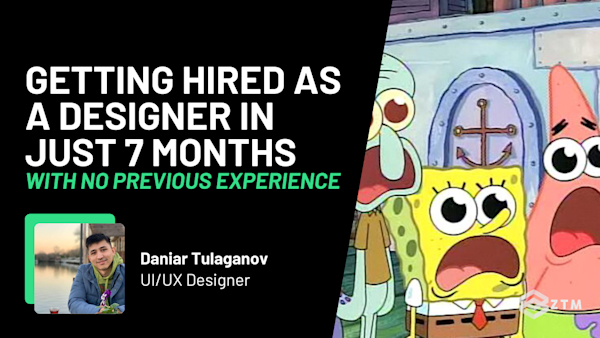If you enjoy being creative and figuring out what people want, then a career as a Product Designer might just be perfect for you!
It pays well, you’re always working on something new, and you get a real sense of accomplishment from helping to bring an idea to life.
But some questions you're probably wondering are:
- Do you need an art degree (or any degree)? Nope.
- How long does it take? ~6 months to go from zero experience to hired (if you're willing to put in the time and effort)
- Is it a good career? Personally speaking, it's been an amazing career for myself (and so many others I know). You have to give a try for yourself but I will say... you can make $100,000+ / year within your first couple years and there are currently 300,000+ jobs available in the US alone, so I'd say it's a great career option
- How do you become a Product Designer (aka UI/UX Designer)? I outline the exact steps to take below... keep reading!
- Is it hard to become a Product Designer? Not harder than learning any other skill or getting any other tech role, I'd say it's actually a bit easier than some (ex: Machine Learning)
- Do I need to be "naturally creative"? No, this is a myth
Don't worry, we'll dive deeper into these questions and many more below.
In this guide, I’ll walk you through:
- What a Product Designer actually does (and the difference between a Product Designer and UI/UX Designer)
- The exact skills you need to become a Product Designer / UI/UX Designer and how to get them (along with some recommended resources)
- The steps to take on this career path, so you learn the right things in the best order
- As well as answer some common questions that come up
So that by the time you finish reading, you can kick-start your new design career.
Let’s dive in!
What is Product Design and what does a Product Designer do?
Product design is simply the process of developing a physical or digital product but not actual creating it.
A Product Designer will take a customer's problems, needs, and/or goals and help develop products to meet those requirements.
This can be anything from physical products like running shoes to digital products like video games or mobile apps you use every day on your phone.
Sometimes these products are brand new and other times they are iterations of an existing product (ex: think about how the look and feel of your iPhone has changed over the years).
At a super high level, product designers determine how the product will work, how it will look and feel (ex: colours, shapes, materials), and maybe even how it's made.
For the purposes of this post, we are going to focus on the role of someone who is designing digital products.
That's where my experience is for the last 10+ years and its also what I teach here at Zero To Mastery.
What's the difference between a Product Designer and a UI/UX Designer?
Like many roles in tech, it probably depends on who you ask 😂!
In my view, there is no difference between a Product Designer and a UI/UX Designer. Any time I refer to these roles, including in this post, I'm referring to the same thing.
It's very common for the titles of Product Designer and UI/UX Designer to be used interchangeably. (Even job posts will bounce back and forth between the terms).

Both roles refer to someone who broadly works on the entire digital design process (the 6 steps I've outlined in the next section) rather than specializes in one specific area of the design process.
Part of the confusion may be because a product can be physical (like a shoe) or digital (like a mobile app) so sometimes people will use UI/UX Designer (ex: in job postings) to make it clear that this person is designing digital products.
If someone is referring to them as different roles then they're likely referring to the UI/UX Designer as being slightly more focused and specialized than the Product Designer (which is the most broad interpretation of the role).
Bigger companies tend to have more designers with more specialized roles and smaller companies tend to have less designers who work on a broader set of tasks.
So what does a UI/UX Designer do?
Fair question, we didn't dive too deep above.
If we're referring to the specialized interpretation of a UI/UX Designer, then their focus will be primarily on the user interface and user experience aspects of a digital product (Steps #2 and #3 in the design workflow below).
They focus on making the product (typically a website or app) visually appealing, easy to use, and engaging for the target audience.

UI/UX designers typically have skills in visual design, interaction design, motion design, information architecture, usability principles, and often have proficiency in design tools such as Sketch, Adobe XD, and Figma.
The best Product Designers and UI/UX Designers also have at least some basic web development skills and experience. It's also one of the easiest ways to make yourself more hirable.
They must also understand user behavior and psychology to create intuitive and enjoyable experiences.
Their responsibilities likely include:
- Creating wireframes
- Designing interfaces
- Conducting usability testing
- Iterating on designs based on feedback
- Collaborating closely with developers to ensure the final product is implemented correctly... commonly referred to as the design handoff
However, as mentioned earlier, at bigger companies with large design departments, there are often roles for people that specialize even further into one specific part of the design process.
The most common ones you'll see are:
- A User Researcher spends a majority of their time just on this research and discovery phase trying to figure out the pain points of customers and users
- A UX Designer is primarly focused on the actual experience a user takes (ex: should a form be a single page or multi page)
- A UI Designer spends most of their time making things look and feel great (ex: what colour should be used, what font should be used, what type of spacing should there be between the text and button, etc.)
- A Graphic Designer is typically creating the various "design assets" and also tends to work closely with marketing teams on things like images for ads or other marketing materials
So what does a Product Designer do then?
EVERYTHING 😬!
Pretending for a minute that we're talking about Product Designers as a different role than a UI/UX Designer then a Product Designer won't just focus on step 2 and 3 in the design process, they'll spend time on all steps.
They have the same skill set that I outlined for UI/UX Designers but they'll also have experience with user research, ideation, prototyping, and often project management.

Product Designers are almost always part of a "Product Team" which will consist of a Product Manager, a Product Designer, and a team of Developers.
- The Product Manager typically determines what product features need to get built (sometimes the Product Designer is involved in this process but not always)
- The Product Designer then figures out how those product features will look, feel, and work and then provide all those details and requirements to the Developer team
- The Developers will then build the product feature based on the requirements from the Designer
Because of this, Product Designers need to have incredible communication skills since they're working with so many different stakeholders and everyone has an opinion on design, and it might not always be great 😉.

💡 Note: If you're interested in a career in Product Design, you'll need to develop thick skin and get very good at receiving feedback. Don't take it personally.
You'll also learn over time that not all feedback is created equal. There are times where you need to stand your ground as the expert and other times when you'll need to adjust your designs based on what your stakeholder requests, even when you don't agree (whether that's the customer, your boss, or the Product Manager).
TL;DR
In the context of digital design, both roles are very similar, but the Product Designer usually covers the entire process, while the UI/UX Designer tends to work only on the UI/UX elements.
However, depending on the size of the company, these roles may overlap, with individuals performing both product design and UI/UX design tasks, so they may use the term interchangeably.
This means that Product Designers often have a lot of UI/UX Designer skills, while UI/UX Designers can also transition into Product Design roles by adding in some user research and project management experience.
It can be helpful to understand this role when you look at a typical design process workflow.
What is the design process?
I've mentioned it a few times so let's actually look at the most common steps of the design process to dive really deep into what Product Designers are doing.
💡 Note: Not every product feature that gets designed goes through this whole process (nor should it).
For example, a marketing team wants to run an A/B test on their website using 2 totally different buttons (different size, position, text size, colour, etc.). In this case, you really just need Step 3 and Step 5 at a minimum.
Step #1. Research and Discovery
A large part of product design is communication. This can be between you, the client, different team members, and even with the customers.
Every project starts with conversations to try and understand the needs, pain points, and goals of the users and stakeholders. Once you know the problem you can start planning solutions.
However, you don’t want to only chat with the client as they may only think of the solution from their own experience. The best way to fully understand a problem is to communicate with the end-user or customer, as well as look at any current solutions in the marketplace.
This requires you to perform some market research and analyze existing products and competitors to identify trends, gaps, and opportunities.
Then you can reach out to ideal customers and gather user feedback. This involves user surveys, interviews, observations, and other research methods to gain insights into user preferences and behaviors.
Step #2. Ideation and Conceptualization
Now that you fully understand the problem, the options out there, and what the audience is dealing with you can start to come up with ideas to solve this.
The Product Designer will brainstorm a range of ideas and concepts to address the identified problem or opportunity (typically together with the Product Manager).
Then they take those ideas and start to sketch up some initial ideas before moving on to some basic prototypes so that other team members can visualize and explore different concepts.
These prototype tools can vary based on industry.
As a rule of thumb:
- Digital designs for software interfaces and web design tend to use Figma or Adobe XD
- Physical products in industrial or architectural might use Rhino 3D
- While mechanical engineering products generally use tools like SolidWorks or AutoDesk
The reason for this specificity is that most of these tools have some interaction with the next stage of design.
For example
Figma can be used for the prototype design of a site or app and then used as a collaboration and project tool with developers.
However, you can also include information in the designs such as coding specifics, that the developers can then pull across when building your design.

Finally, the Designer and team will review the proposed solutions and evaluate the concepts based on criteria such as feasibility, user needs, and business goals.
For example
You might find a perfect solution but after speaking with the Developers, it's determined that the cost to create is too high (ie: it will take too long to build or is too complex to build) so you need to find a different option.
Once a winner is found and agreed on, it moves forward into the design phase.
Step #3. Design Development
In the last stage, the prototype was fairly basic to grasp the idea. At this point, you start to create more detailed designs, including user interface (UI) design, interaction design (UX), and visual design - so you can start to see how the end product will work with the user.
This normally involves more interactive prototypes to simulate the user experience, gather feedback for iteration, and continuously refine and improve the design based on controlled user feedback, technical constraints, and basic usability testing.
- Does it work as intended?
- Can someone use it with direction?
- Does it break?
- Etc
Step #4. Testing and Validation
Once you’ve got a satisfactory controlled response, it’s time to test it with real users to evaluate the effectiveness and usability of the design.
It’s still a semi-controlled environment, with the goal to get user insights from testing to make iterative improvements to the design.
These people are usually a few steps removed, and so you’re seeing if the product works without any insider knowledge.
Once you’ve got to the point where you’re happy with it, it’s time to present the design to stakeholders for further feedback and approval before moving to the next stage.
Step #5. Implementation and Production
You might think at this point your work is done, but not just yet!
Once the design is done, you prepare your final design assets and specifications for handoff to the development team.
Then you continue to collaborate with them to ensure that the design is implemented accurately and efficiently and meets design specifications and quality standards.
It would suck to spend all that time making the perfect design, only for it to not actually be built the way you designed and tested it right!?
Step #6. Launch and Post-launch Evaluation
Finally, the product is launched into the world. But as a good Designer (along with the Product Manager), you continue to monitor its performance in the market and collect user feedback.
This way you can continue to collect data on product usage to identify areas for further improvements or version 2.0.
Then onto the next feature!
So yeah, as you can see there’s a lot of different skills required in a product design role.
Is Product Design (or UI/UX Design) a good career choice?
For most people considering a new career, the most important career is whether there are jobs available or not (makes sense).
The good news is that at the time of writing this, there are currently 400,000+ Product Designer jobs and 200,000+ UI/UX Designer roles in the US alone.
💡 Note: Take any job listing site numbers with a grain of salt. This was a super quick search.
For example, the Product Designer job numbers from ZipRecruiter aren't specific just to digital design and for some reason, when searching for UI/UX Designer, some Developer roles come up.
But even if we assumed 50% were junk (which is overly conservative), there would still be 300,000+ relevant Product Designer roles available in the US.
No matter how we slice it, I think we can clearly say there is a lot of demand for Designers!
What about the salary? That's the next key factor people think about when determing if it's a "good" career to consider.
How much do Product Designers (and UI/UX Designers) make?
Based on the average salary ranges of the design jobs posted on ZipRecruiter, Product Designers can expect to earn around $144,360 per year, with senior roles earning over $200,000 / year!

While UX/UX Designers earn around $112,198 per year.

Fun fact: There were 4,625 UI/UX Designer roles offering more than $200,000 a year!

Do I need a degree to be a Product Designer?
Nope! Employers just want to see that you’ve got the necessary knowledge and skills to do the job.
What skills in particular? I’ll let you know in just a second once we get into the Product Designer career roadmap.
But the most important factor companies look at in the hiring process of a Designer is your past work which is why it's key to create a kick-ass design portfolio.
For example
Here's an excerpt from the job posting we posted a few years back from when we were hiring a Senior Product Designer here at Zero To Mastery!

We didn't care if our Designer had a degree - only that they can do the work. This is what we wanted to see:

This isn't an outlier. In fact, it's becoming less and less of a requirement to have a University Degree across all tech, especially in design roles.
What skills do I need to become a Product Designer?
We've touched on these a little during this post, and I'll go into them in more detail in the roadmap section, but here's a mile-high overview:
- Communication and Collaboration: Because you'll be working across multiple teams, and with both tech and non-tech stakeholders, effective communication is vital to articulate design concepts and present ideas
- Problem-Solving Skills: You need to be able to analyze complex problems, identify user needs and pain points, and devise innovative design solutions to address them
- Design Fundamentals: Understanding of design principles such as layout, typography, color theory, and composition is essential for creating visually appealing and user-friendly interfaces
- Understand and use User-Centered Design: Empathy is a design superpower that will come up again and again. The ability to empathize with users, conduct useful user research, gather relevant insights, and incorporate user feedback into the design process is vital to a successful product
- User Testing and Evaluation: You need to also be proficient in conducting usability testing, user interviews, and heuristic evaluations to identify usability issues and iterate on designs
- Visual Design Skills: Strong graphic design skills including iconography, branding, visual hierarchy, and UI aesthetics to create polished and engaging user interfaces can help. That being said, almost everything you do will be digital, so good habits can often outwork natural artistic talent
- Prototyping and Wireframing: This does mean however that you need to be proficient in tools like Adobe XD, Sketch, Figma, or prototyping platforms like InVision to create wireframes, mockups, and interactive prototypes for testing and validation
- Interaction Design: You need to understand interaction patterns, microinteractions, and feedback mechanisms to create seamless and intuitive user interactions and flows
- Responsive Design: Knowledge of responsive design principles and techniques to ensure consistency and usability across different devices and screen sizes is helpful. Good tools will also help to bake this into your design
- Information Architecture: Because you'll often work with digital interfaces for users, the ability to organize and structure content in a clear and logical manner to facilitate navigation and usability within the interface is incredibly important
- Continuous Learning: Finally, it's never a bad idea to stay updated on design trends, emerging technologies, and industry best practices through online courses, workshops, conferences, and networking with other designers
Let's compare that with our same Designer job post we mentioned earlier:

We added a few extra requirements due to the nature of our business (able to wrok remote, self starter, etc).
But the main design skills are all there in our listing, because each of these areas is vital to be an effective Product Designer.
In our case, we required 3+ years of experience because they were our first Design hire so we needed someone with enough experience to be able to work completely independently.
How long does it take to become a Product Designer?
It's entirely possible to go from absolutely no experience or background to becoming a product Designer and getting hired in 6-12 months if you're spending ~20-40 hours / week.
It all depends on your current skills and how much time you put into into it every week.
This might seem like a lot but is really not bad when you consider this is learning from scratch with zero experience, and by the end of it, being able to land a job making $80,000 - $100,000 a year (just to start out)!
Following a guided course or learning path that's completely up-to-date is the fastest way to become a Product Designer because it'll ensure you're only learning what's actually important to get hired in today's job market.
Learning on the job is the ultimate goal so the best course should help you get there ASAP. Why?
- You learn way faster doing real-world work
- You get paid while you continue to build your skills
That's the focus of the design bootcamp that I teach.
For example:
One of our students went from absolutely zero experience to getting hired as a UI/UX designer in under 7 months. But they also worked their ass off.
How to become a Product Designer (Without a degree!)
I’ve broken this down for you into 7 main steps.
Step 1: Set yourself up for success
This first step is completely optional but highly recommended, because here’s the thing: Most people don’t know how to learn effectively.
It’s not their fault. Schools teach basic rote methods of learning which are pretty inefficient. They say the thing, and you try to remember the thing, and it's not great - especially if you require certain learning styles to learn best.
This means that topics you might do well with are harder to remember or apply, so it takes longer to learn.
The thing is, there are multiple different learning techniques that you can use that make all of your future learning efforts far more effective. This means you can understand faster and more efficiently, so less back and forth.
You can learn a lot of the key techniques for free right now in this guide, or better still, watch every important technique inside of Andrei’s learning how to learn course.
Estimated Time Required For This Step: 5 days.
I know it might feel like a step backward or even a detour, but think about it like this:
- You can learn the core principles in a few days and then immediately start putting them into practice
- You're going to learn everything else from now on 2x faster and retain way more as well
- This is a skill that you can keep developing over time and will serve you for your entire career, guaranteed
Bear in mind that there are multiple skills that you need to pick up to become a Product Designer, and each of them can take weeks or even months of work to complete.
So why not learn how to cut down on that time, improve your comprehension, and pick up skills faster and easier first? The time and energy savings will seriously compound as you go through the rest of the content you need to learn.
Then, once you’ve gone through that course and figured out how to learn faster, you can jump into learning Product Design at a more accelerated pace.
Step #2: Learn Design Theory, Principles, and Fundamentals
Start off by learning the fundamentals and most important concepts around design, such as Design thinking and User-centered design.
Understanding these concepts will help you pick up specific design skills and solve user problems much easier.
‘The Design of Everyday Things’ by Don Norman is a great book to read.

Then, get a high-level understanding of UX (User Experience) and UI (User Interface) design.
Since you’ll be working with end users and trying to solve their problems, you'll also need to learn about user personas and different user research methods.
Finally, take a second to learn the basics of usability testing so you can continue to communicate with your audience and improve your design.
💡 Note: This isn't an exhaustive list of principles you'll need to learn but it's a good start for now.
Also, a high-quality design course / bootcamp should cover all these principles. And yes of course I cover these in my course 😉.
Now that you have a rough grasp of some of the most important design concepts, let’s start applying this knowledge.
Step #3: Learn the toolkit of a Product Designer
This is the meat and potatoes of where you'll be spending the biggest chunk of time. There is a LOT to cover.
You should learn all these topics and skills:
- Sketching
- User Flows
- Prototyping
- Wireframing
- Figma
- Visual Design (Grids & Spacing, Typography, Color, Forms & UI Elements, Imagery & Iconography, Accessibility)
- Design Patterns
- Mobile Design & Responsive Design
- Bonus Skills: Motion Design, Micro Interactions, Basic Web Development (HTML + CSS)
You can find many resources out there to learn all of these (many of them free) but if want to learn all of them in one place as efficiently as possible, then come check out my Complete Web & Mobile Design Bootcamp where I teach all these topics (and even more).
No prior experience or design/coding skills are required. Just a computer, an internet connection, and a passion for learning design.
Not sure? You can watch the first 6 hours from my Design Bootcamp Course below, completely for free so you can see yourself if it's a good fit for you.
If you enjoy it, then come take the full course so that you have all the required skills to get hired as a Product Designer or UI/UX Designer.
Speaking of getting hired, you’re going to need to showcase your skills somehow…
Step #4: Create a design project portfolio
Before you can start applying for jobs, you need to be able to share your work.
This does 2 things:
- It proves that you have the required skills
- It also showcases your own style (visual design is ultimately subjective so your style won't necessarily fit what every company is looking for... that's ok!)
Check out this guide to creating projects for your portfolio and check out my other course on personal branding and resume creation.
We’ve had students get approached for jobs by recruiters just because of how impressive their portfolio site is - before they even applied to the company!
Speaking of your resume - We already mentioned design theory earlier and it's importance, but you can make your resume pop and stand out even further by adding some color theory to it.
Step #5: Get some hands-on experience
So you’ve completed some training but employers are still asking for that all-important experience.
How can you get the experience before you get the job? Here are some ideas for you. You'll see most of them follow a similar theme: do the job before you have the job.
- Create personal projects. If you're stuck for ideas, here are 8 design project ideas that I recommend.

For example
In one of the projects, I walk you through how to create an entire airbnb copy website from start to finish - including client brief and more!
- Do some self promotion! In addition to your own website, post your designs on a site like Dribbble which can help you get noticed (kind of like Github is for Developers)
- Find gigs on freelance sites like fiverr.com, freelance.com, upwork.com and guru.com. Often the standard here is much lower than full-time work so you can gain experience and build out your project portfolio
- If you currently have a job in the tech industry, talk to someone at your company who has the same or similar role that you want and offer to help them out
- Search for internships. Even if they don’t pay a lot (or anything), they’re invaluable for experience and networking with others. You can even reach out to a local college or university, and tell them you’re looking for volunteer or internship opportunities in your area of interest
- Attend user groups and meetups. This is a great way to meet people, increase your knowledge and skills, and learn about opportunities
- Reach out to local businesses and offer to help them for free. Maybe your friend has a clothing company and you have some ideas on how they could improve their website
- Do the job before you have it. This a great way to stand out. If there's a company you really want to work for... re-design a feature or page on their site and do a write-up on how you made the decisions you did and what your process would do to user test the new designs. Best case scenario: You will 100,000% stand out. Worst case scenario: It doesn't work out but you have a new design project for your portfolio
Step #6: Apply for jobs!
By this point, you have the necessary skills (and portfolio) to start applying for Product Designer and UI/UX Designer roles. So start applying now - even if you don't feel ready.
However, let's talk about the interview...
The interview process
One of the reasons that tech companies hire people without college degrees is that they have a thorough interview process.
This means not only answering technical questions about the role you’re going for, but they will also want to see previous project work, or even ask you to complete a project that allows you to demonstrate you have the necessary skills (regardless of how or where you learned them).
We already have the portfolio covered from earlier, but now we need to do a little prep for the interview.
You can check out my guide on some of the most common questions you might get in a Designer interview.
Check out this video as well:
If you're a ZTM member, then I HIGHLY recommend you also check our Andrei's new course on getting hired at your dream job:
Estimated Time Required For This Step: 12 days.
He covers all this in far more detail, including his technique to get a 90% interview success rate!
If you're not a ZTM member, then check out this guide, as well as these extra tips:
Tip 1. Tech jobs are more than just tech skills
In addition to the technical know-how you’ve built up, interviewers will be evaluating your soft skills.
This is especially true for Design roles because it's so people-focused. You're constantly communicating with a wide variety of stakeholders: customers and users, potentially senior leaders, and developers.
Companies need to be able to trust you to represent their brand well especially in conversations with those external stakeholders.
So the better you get at understanding others and communicating, the better you’ll be as a Designer, and the faster you’ll get promoted.
- Be prepared with examples that can point to your strong communication skills (ex: helping resolve a conflict working at a restaurant, working as a teacher, etc.)
- Make sure to demonstrate strong communication skills in writing and during the interviews (whether virtual or in-person)... Even very basic things like: using proper grammar and having no spelling mistakes, sending a thank you email with 24 hours of your interview, etc
I also recommend checking out this guide on improving your design handoff to developers.

Not only will it help with your design work and planning, but you’ll notice that a lot of the common problems and improvements for a better handoff come from improving communication so I've include a lot of tips that will help you in this area.
Tip 2. Have specific examples of how you’ve solved problems
A Product Designer does a lot of troubleshooting and problem solving. Maybe in day to day tasks, but also in how you come up with ideas to solve the clients needs.
With that in mind, be prepared to talk through a situation or two where you saved the day by solving a complex or business-critical problem. Even better if you have a design specific example.
Tip 3. Go the extra-mile with your interview prep
Don't just have your portfolio and practice a few interview questions.
Stand out by:
- Researching the company. Learn what you can about their design needs and why they’re hiring for your role
- Learn what you can about the people you’ll be interviewing with, and what their potential areas of focus will be
- Practice, practice, practice. Do a mock interview with friends or family, or even just interview yourself, speaking your answers out loud. It’s amazing the difference this makes, and how much more polished you’ll be on the big day
- Have prepared answers ready for questions you will 100% be asked (ex: "walk me through your resume", "what are your weaknesses", "what is a time you've failed", etc.)
- Be on time (or even a little bit early) for the interview
- Dress the part. Figure out the “norm” for the company’s culture (jeans and T-shirt or more professional?) and dress to fit in. If you’re unsure, err on the side of dressing “up"
If you follow these tips, you'll find each interview goes much smoother and far less stressful, while also increasing your chances of being hired.
Step #7: Keep learning supplementary skills to get promoted
I mentioned earlier how Senior Designers can earn $200,000 or higher.
Of course, some of this can only come from experience and years on the job, but you can also fast track this by adding complementary skills as well.
For example:
- The most obvious one is to learn Motion Design to take your designs (and ultimately the products that get built) to the next level with animations and graphics
- You could learn Web Development so that you can work better with developers especially by better understanding their needs and constraints
- You could learn Three.js to add in more impressive 3D models and designs for UI/UX
- You could even dive deeper into CSS
All of these skills would help you stand out further as a Product Designer.
Another bonus! - Learn to use A.I. tools to make your life easier
Although you don't have to do this, I highly recommend that you learn to use AI tools to supplement what you do already.
You don't need to work solely with A.I. to see the benefit. By learning to use these tools, you can increase your output and perform repeatable tasks in minutes vs hours or days.
And sure - the tools are not perfect. You still need to have the core knowledge that you're learned above, but by then applying that experience you have now, with that automation, you'll not only make your life easier - but even grow indemand.
A.I. won't steal your job. But people who can do their job faster and more effectively because they can use the tools, are going to be in high demand.
So add it to you skills, make work easier, and be the one that employers fight over!
Not sure how to use these tools?
Well, go ahead and check out our AI training:
- AI for Beginners: Inside Large Language Models
- Prompt Engineering with LLMs
- How the ChatGPT code interpreter works and how to use it
- A.I. coding with GitHub co-pilot
Check those out and see how they can help you.
Also, depending on the time that you read this, there may be new specific A.I. tools for your role, so have a quick Google search and see if there anything that can help, and play around with it.
At it's most basic, you can look at the processes you already do and see if there are ways to streamline or automate certain tasks.
So what are you waiting for? Become a Product Designer today!
So there you have it, friends! I hope you’ve found this guide helpful.
Like all career moves, becoming a Product Designer takes time and effort, but it’s an exciting area with lots of opportunities.
You’ll get to work on a variety of interesting problems, learn cool technologies, and get paid well while doing it.
The best part is that it's really not too difficult to pick up (and you don't need to be "naturally creative").
You’ll be surprised how fast you can learn and start working in this role if you follow a set path like I’ve recommended.
P.S.
All of my design courses I’ve mentioned are all part of Zero To Mastery. So when you become a member of ZTM, you have access to all of these courses right away and will have everything you need in one place.
Plus, as part of your membership, you'll get to join myself and 1,000s of other people (including many alumni mentors and others who are taking the same courses that you will be) in the ZTM Discord.
You can ask questions, help others, or just network with other designers and tech professionals.
Make today the day you take a chance on YOU. There's no reason why you couldn't be applying for UI/UX Design jobs in just a few months from now if you just follow the steps I outline and put in the hard work.
So what are you waiting for? 😀 Dive into your new design career today!
